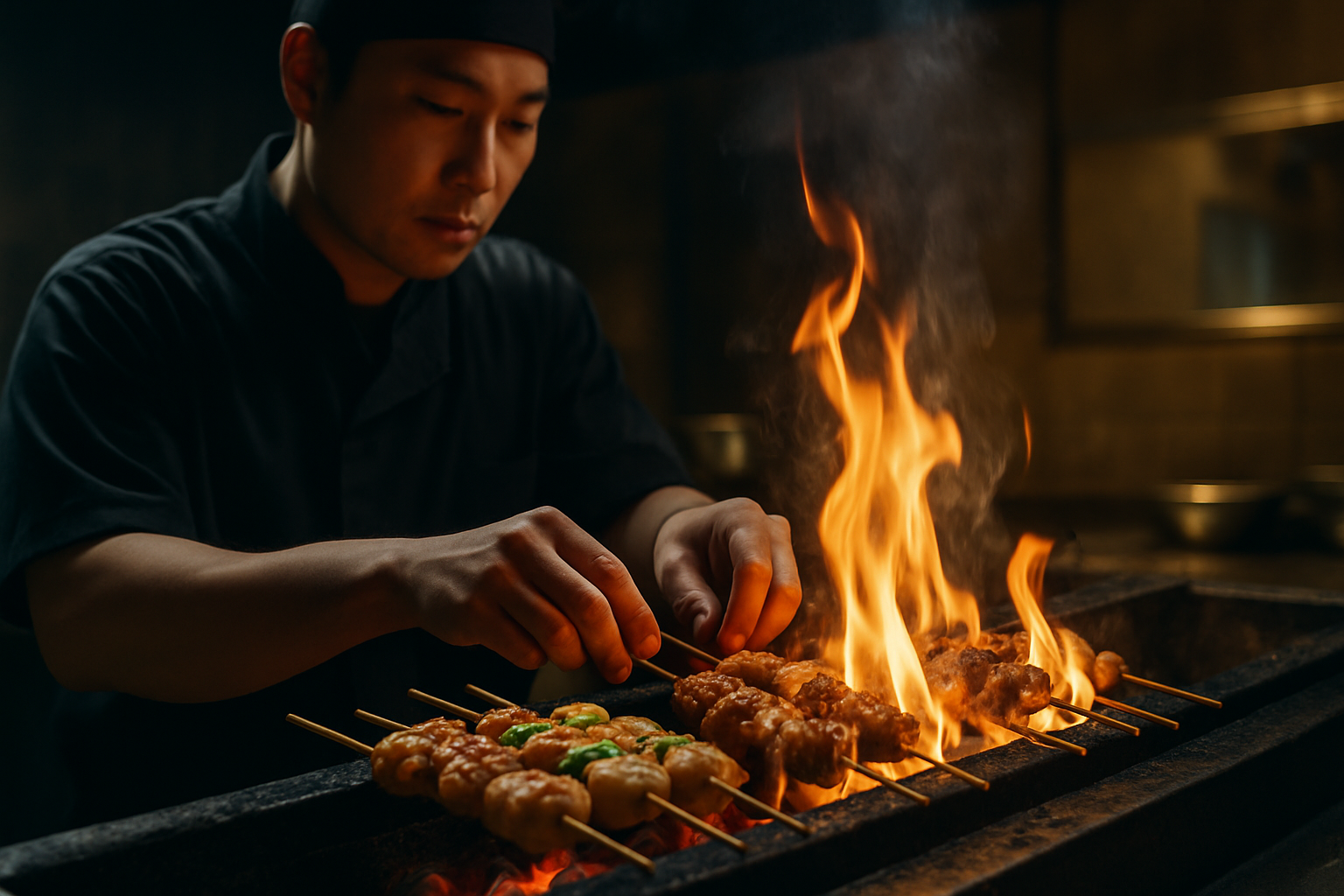Sizzling Skewers: The Global Obsession with Yakitori
Bite-sized, charred, and bursting with flavor, yakitori has transcended its Japanese roots to become a worldwide culinary sensation. This article delves into the art of yakitori, exploring its rich history, diverse ingredients, and modern interpretations that have food enthusiasts everywhere firing up their grills.

A Journey Through Flavors
The beauty of yakitori lies in its versatility. While chicken remains a staple, modern yakitori chefs experiment with everything from wagyu beef to locally-sourced vegetables. The marinades and glazes play a crucial role in elevating these simple skewers to gourmet status. Traditional tare sauce, a sweet and savory blend of soy sauce, mirin, and sake, forms the base for countless variations. Innovative chefs are now incorporating global flavors, creating fusion yakitori that combines Japanese techniques with international ingredients.
The Art of Grilling
Mastering yakitori grilling is an art form that requires patience, skill, and attention to detail. The ideal yakitori grill, known as a konro, is narrow and rectangular, allowing for precise heat control. Binchotan charcoal, prized for its long-burning, high-heat properties, is the fuel of choice for authentic yakitori. The grilling process involves constant turning and basting, ensuring each skewer achieves the perfect balance of char and juiciness. This hands-on approach creates a mesmerizing spectacle, turning the preparation of yakitori into a performance.
Yakitori Beyond Borders
As yakitori’s popularity soars, it’s finding its way into diverse culinary landscapes worldwide. In bustling metropolises, yakitori food trucks offer quick, flavorful bites to on-the-go urbanites. High-end restaurants are elevating yakitori to fine dining status, pairing skewers with carefully selected wines and crafting elaborate tasting menus. Home cooks are embracing yakitori as a fun, interactive meal option for gatherings, sparking a surge in yakitori grill sales and cooking classes.
Sustainability and Innovation
The yakitori trend is also driving conversations about sustainability in the culinary world. Chefs are adopting nose-to-tail practices, utilizing every part of the animal to reduce waste. Plant-based yakitori options are gaining traction, with innovative chefs crafting skewers from mushrooms, tofu, and meat alternatives that mimic the texture and flavor of traditional yakitori. Some restaurants are even experimenting with lab-grown meat for yakitori, pushing the boundaries of culinary innovation while addressing environmental concerns.
Tasty Tips for Yakitori Mastery
-
Use metal skewers for even heat distribution and easy flipping
-
Soak wooden skewers in water for 30 minutes before use to prevent burning
-
Cut ingredients into uniform sizes for consistent cooking
-
Alternate meat with vegetables on skewers for balanced flavor and texture
-
Brush skewers with tare sauce in the final minutes of grilling for a glossy finish
-
Let skewers rest for a few minutes after grilling to allow juices to redistribute
Embracing the Yakitori Revolution
As yakitori continues to captivate taste buds around the globe, it’s clear that this Japanese grilling technique has become more than just a culinary trend—it’s a movement. From street food stalls to Michelin-starred restaurants, yakitori is inspiring chefs and food lovers to explore new flavors, embrace sustainable practices, and celebrate the joy of simple, perfectly grilled bites. Whether you’re a seasoned foodie or a curious novice, the world of yakitori offers an exciting journey of flavors waiting to be discovered.





